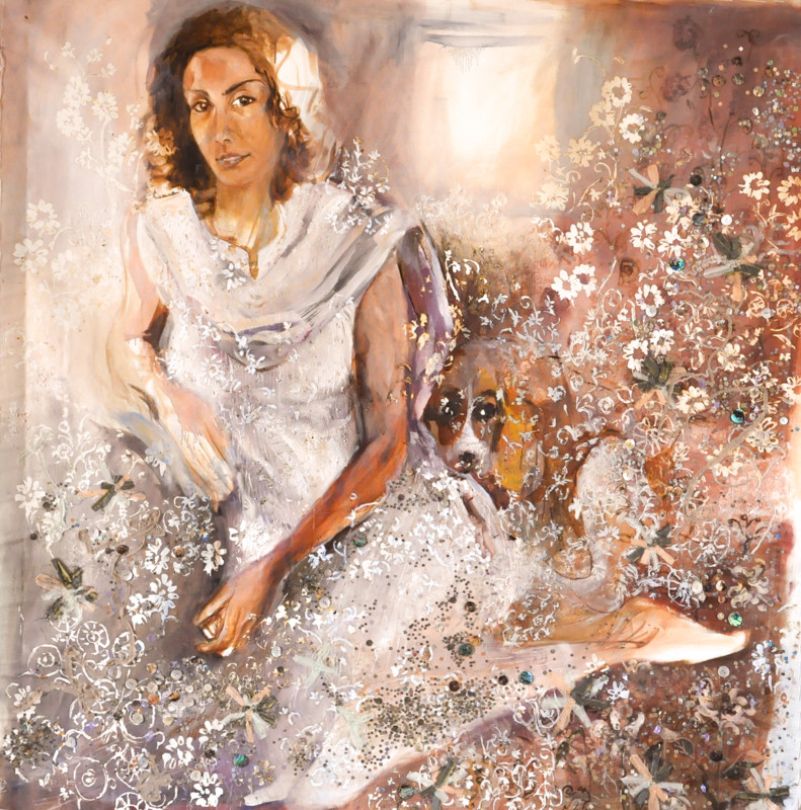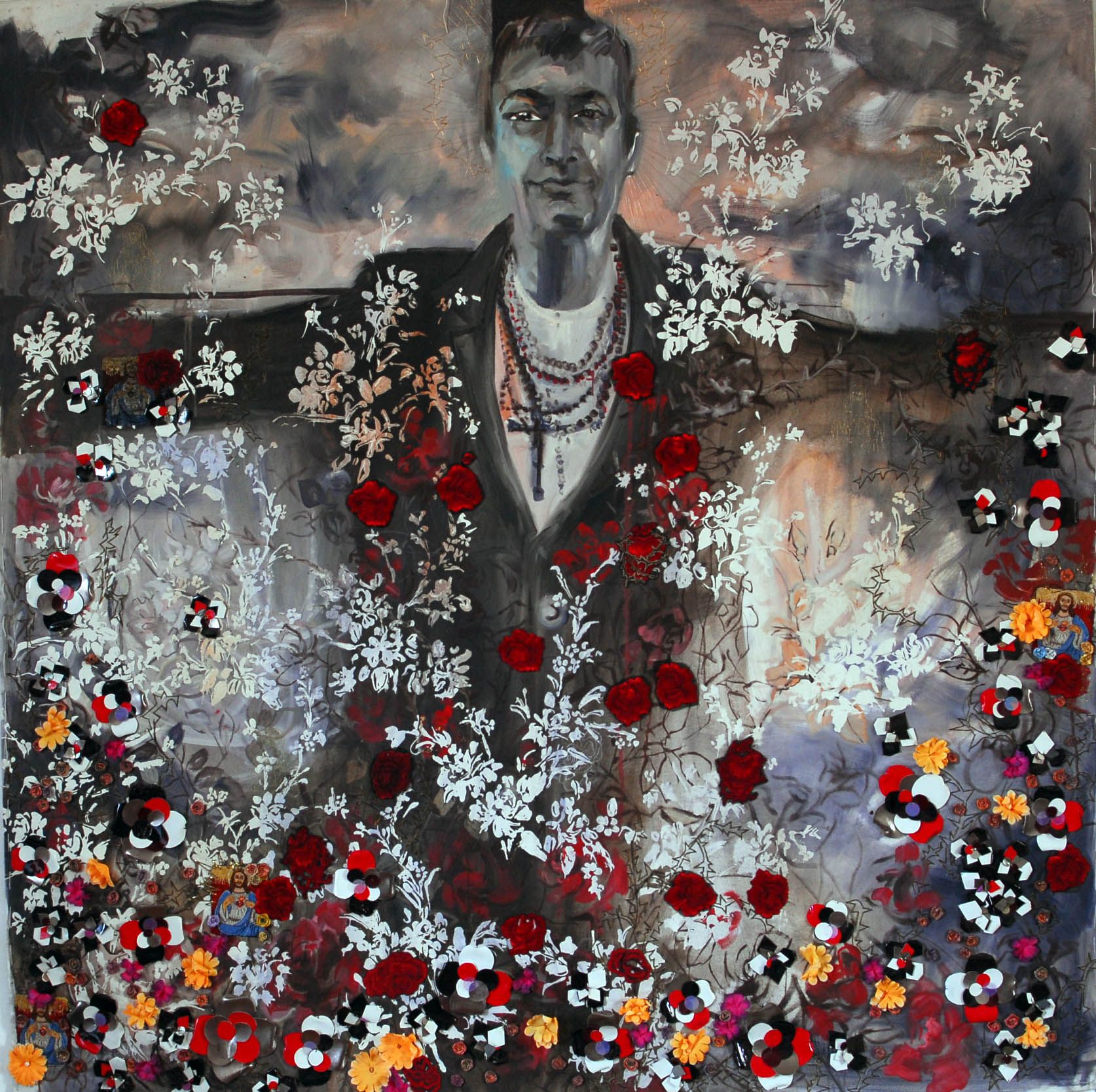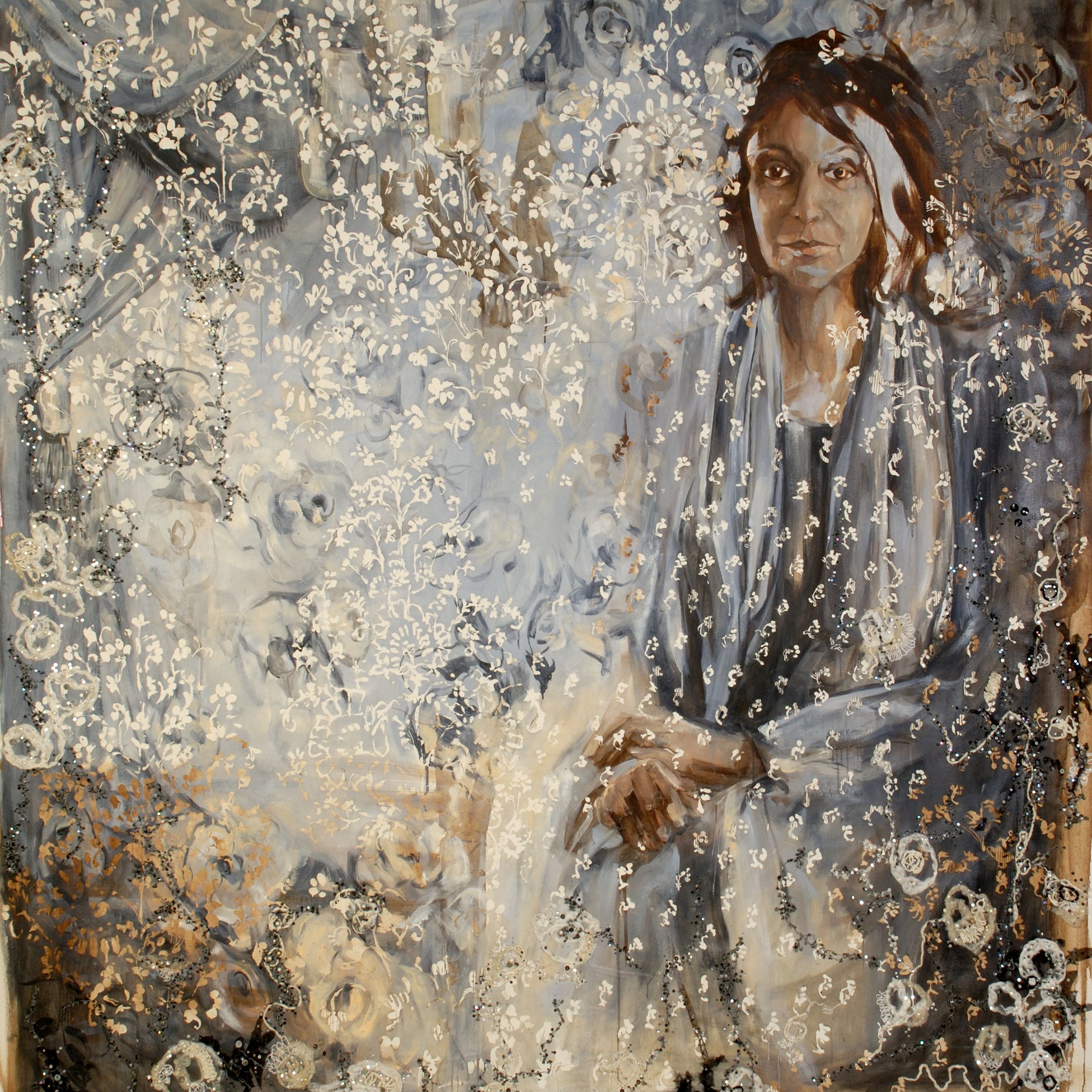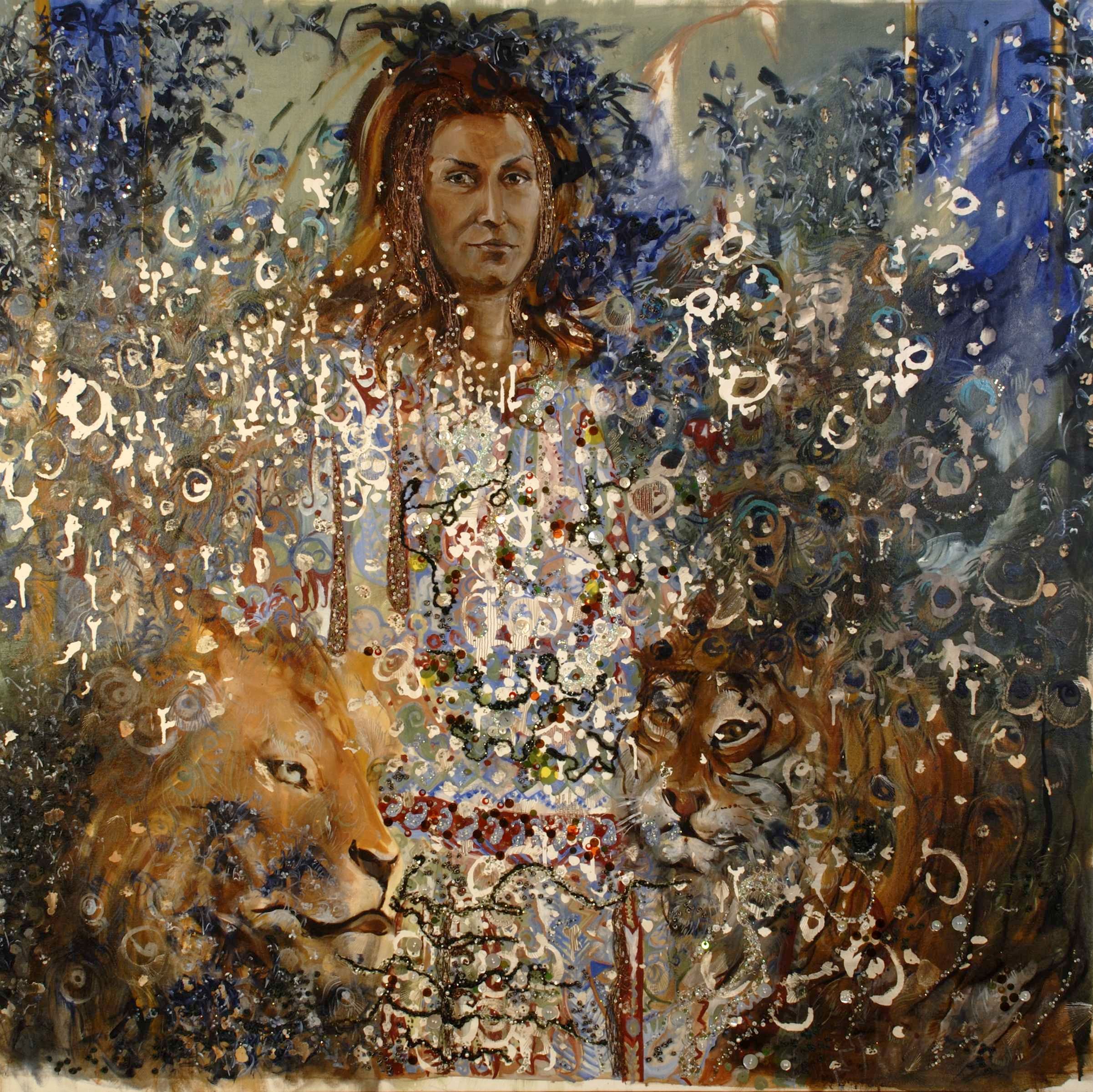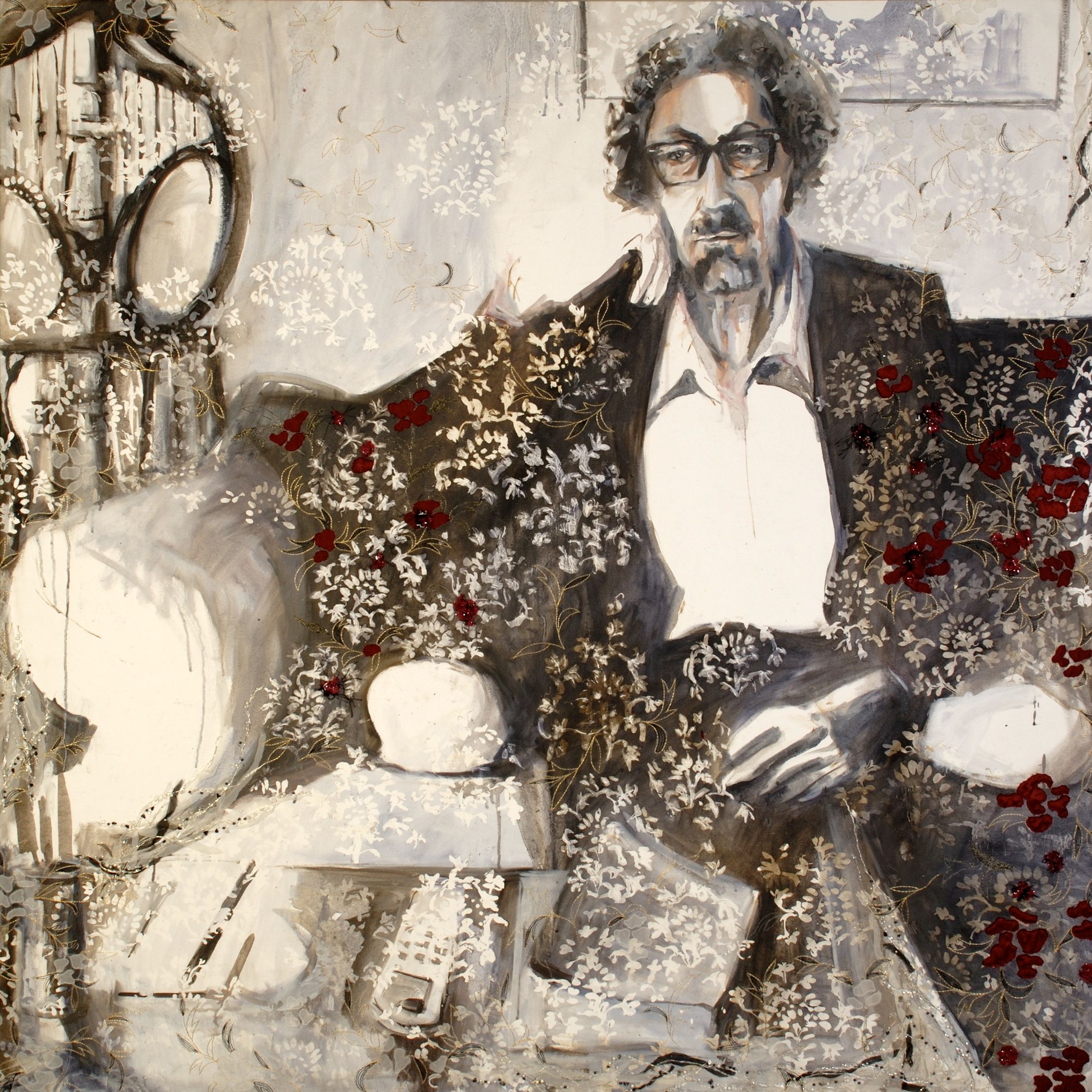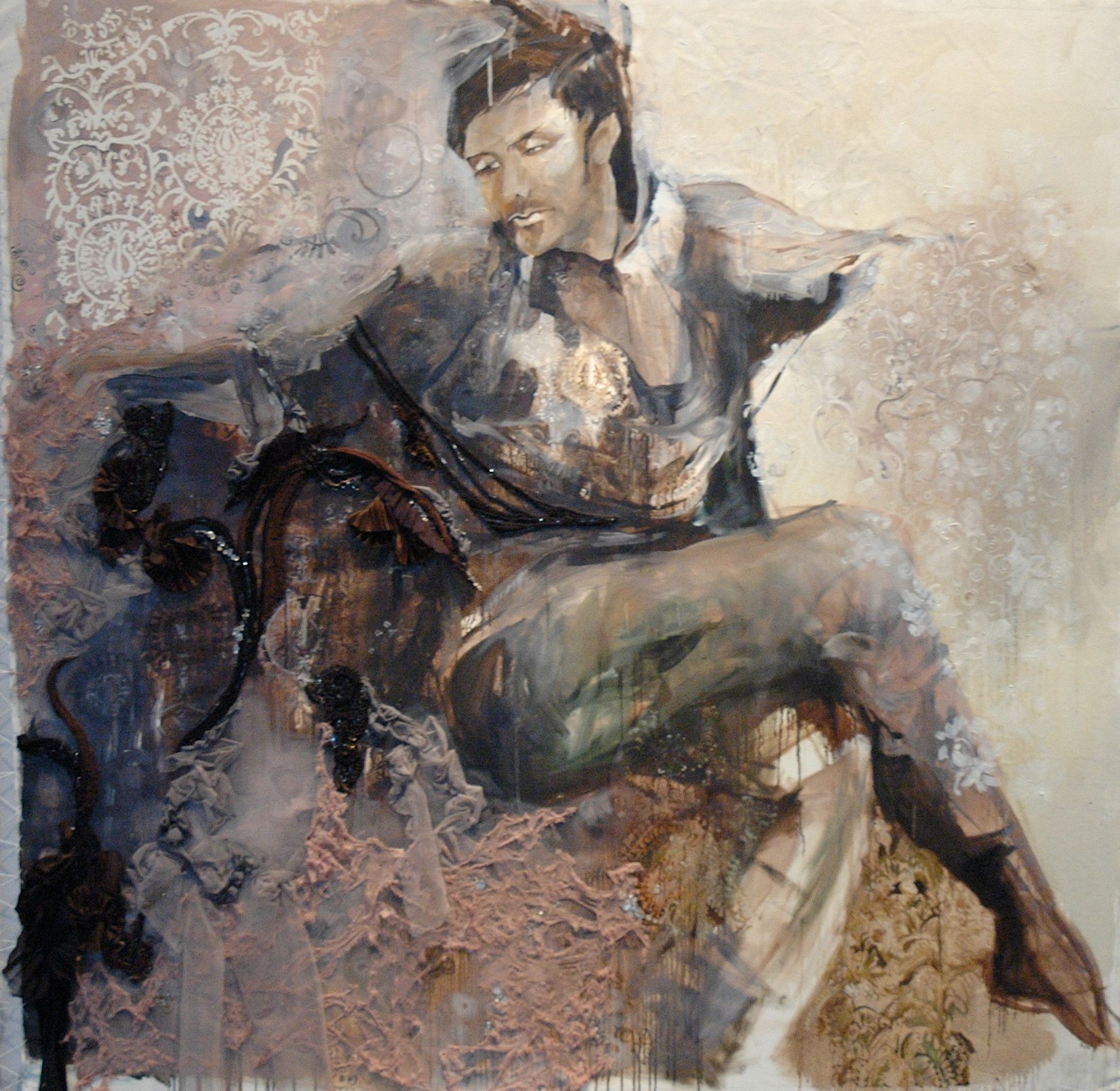Portraits And Embroidery
— 2010 —
Marion Colomer’s oil paintings represent a panel of Indian society captured through a series of portraits. They testify to an other reality of the country not reduced to the common cliché of the poor.
The diversity of the models chosen show the rich culture of India, captured in a context of growth through its philosophers, Sufi poets, artists, fashions designers, business men, glitterati or old maharajas and maharanis. The models contain within-themselves the great energy of modern India, standing at the crossroad of traditional India and the India to become. These specially selected models are iconic figures of the vast Indian culture and represent an ideology, such as the portrait of Gaddar the Naxalite or the greatness of the historic Raj.
Marion’s work combine a classical style of Western paintings and merges it with traditional motifs of Indian culture, including designs observed in numerous miniature paintings and textiles. The motifs are used abundantly throughout her body of work and take three different forms: positive motifs who are painted; negative motifs, scratched off the painted surface and revealing the naked canvas; and finally culminating with positive hand-sewed embroideries, influenced by traditional Indian and Western styles of artwork.
The symbolism of the motifs references the condition of the Indian Woman. Some women in today’s India are still recluses in their homes and unable to witness the outside world. As it was in the old times, when purdah was practiced and a woman’s view was blocked by a Jalli marble window, some present-day women can only see life through a window masked and blocked by the screen of a mosquito net or grille. The motifs in Marion’s painting are a metaphor of this obstructed view.
Similarly to the way women’s view is blocked by images or fixtures, so an outsider cannot see them, some sections of Marion’s painting remain blank, as illustrated by the nudity of the canvas. As spectators observe the painting, their view is partially obstructed by the blank screen patterns. This illustrates Marion’s inability to completely understand her model, the difficulty of restituting their personality, identity, life and culture, which continues to escape her.
The use of the embroideries, hand-stitched directly on the canvas, on the top of the painting, represents and symbolizes both French and India craftwork.
In Western art forms, specifically the French style, these embroideries draw parallels to the feminine style of work forming the bridge from childhood to womanhood. They embroider their initials in cross point on their trousseau (wedding dowry). In India, embroiders are predominately Muslim males and are the artesian depositaries of the Mogol artistic legacy. The inclusion of embroideries in Marion’s paintings are a symbolic way for her to exchange and collaborate with local craftsmen and artisans as well understand Indian culture, more so than to beautify by decorating the painting. They add a layer of decorative complexity helps connect with and represent the personality of the model.p>
Marion’s paintings are intricately designed in a multifaceted style, with different levels, to express her exposure to India. Her multi-layered process, much like the traditional Indian architecture, or caste system still ruling society today, are woven and artistically embedded into her portraits. The combination of oil painting, decorative motifs and stylistic embroideries, of both French and Indian influences, are an integral combination of Western and Oriental traditions which ultimately bridge the two dynamic cultures.
